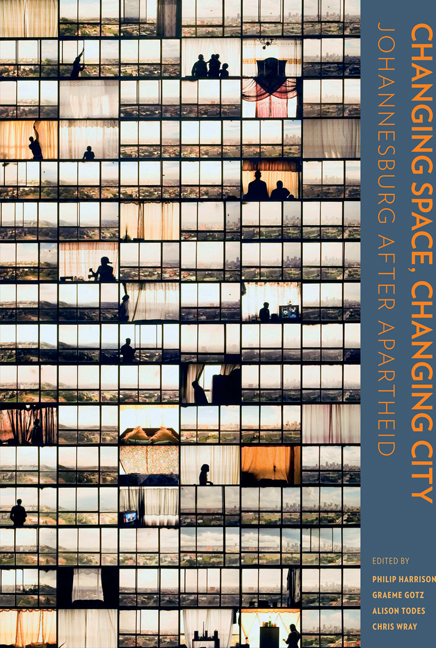Book contents
- Frontmatter
- Contents
- Preface
- Cartography
- 1 Materialities, subjectivities and spatial transformation in Johannesburg
- Section A The macro trends
- 2 The ‘thin oil of urbanisation’? Spatial change in Johannesburg and the Gauteng city-region
- 3 Poverty and inequality in the Gauteng city-region
- 4 The impact of policy and strategic spatial planning
- 5 Tracking changes in the urban built environment: An emerging perspective from the City of Johannesburg
- 6 Johannesburg's urban space economy
- 7 Changes in the natural landscape
- 8 Informal settlements
- 9 Public housing in Johannesburg
- 10 Transport in the shaping of space
- 11 Gated communities and spatial transformation in Greater Johannesburg
- Section B Area-based transformations
- Section C Spatial identities
- Contributors
- Photographic credits
- Acronyms
- List of plates
- List of figures
- List of tables
- Index
11 - Gated communities and spatial transformation in Greater Johannesburg
from Section A - The macro trends
Published online by Cambridge University Press: 20 April 2018
- Frontmatter
- Contents
- Preface
- Cartography
- 1 Materialities, subjectivities and spatial transformation in Johannesburg
- Section A The macro trends
- 2 The ‘thin oil of urbanisation’? Spatial change in Johannesburg and the Gauteng city-region
- 3 Poverty and inequality in the Gauteng city-region
- 4 The impact of policy and strategic spatial planning
- 5 Tracking changes in the urban built environment: An emerging perspective from the City of Johannesburg
- 6 Johannesburg's urban space economy
- 7 Changes in the natural landscape
- 8 Informal settlements
- 9 Public housing in Johannesburg
- 10 Transport in the shaping of space
- 11 Gated communities and spatial transformation in Greater Johannesburg
- Section B Area-based transformations
- Section C Spatial identities
- Contributors
- Photographic credits
- Acronyms
- List of plates
- List of figures
- List of tables
- Index
Summary
Continuous spatial transformation is a characteristic of any settlement, whether it happens regularly, for example in large cities and metropolitan areas, or is part of a slow process, as in small rural villages (Madanipour 1996). Urban structure and form is dynamic, continuously changing in direct relationship to its producers and inhabitants, through a continuous process of spatial transformation. Thus, when needs or urban activities change, urban form has to adapt to these and change as well. Over time, land-use patterns transform the arbitrary layout into structure filled with information, into a place filled with possibilities. This again sets up further possibilities for physical and social reaction.
Gated communities are closed-off spaces, representing a transformation of open space to closed space through physical boundaries. The study of gated communities is therefore also concerned with the physical transformation of space. The number of gated communities in South Africa has increased tremendously since the late 1990s, with various types spreading across the urban landscape. As a significant contributor to urban spatial transformation in many areas, there is a need to understand the extent and impact of different types of gated community in Greater Johannesburg and their implications for spatial restructuring and sustainable development.
The spatial history of South Africa is characterised by racial segregation under the apartheid regime which, among other things, entailed the intentional segregation of neighbourhoods. This led to centrally located neighbourhoods being reserved exclusively for whites, with non-white areas and areas of poverty located on the outskirts of the urban areas. This resulted in the scarring of cities through decentralisation and sprawl (Horn 2002; Prinsloo and Cloete 2002). Apart from the immense task of reconciliation, post-apartheid South African cities are therefore also concerned with spatial restructuring and integration of residents across the urban landscape.
This raises many questions related to the appropriate nature of new developments to facilitate spatial integration in these cities and the role that planning and relevant policies should play to accommodate appropriate transformation.
- Type
- Chapter
- Information
- Changing Space, Changing CityJohannesburg after apartheid, pp. 215 - 229Publisher: Wits University PressPrint publication year: 2014

